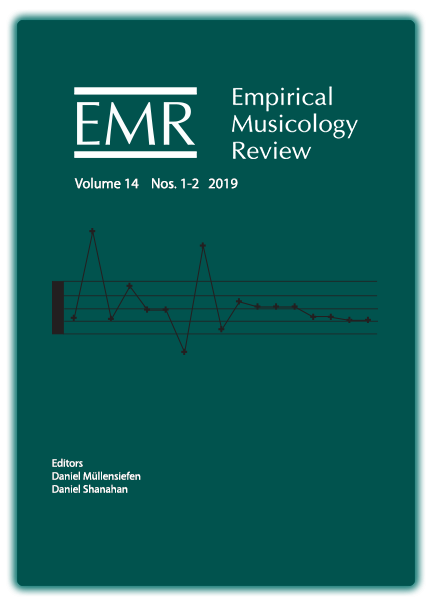Expanding and Contracting Definitions of Syncopation: Commentary on Temperley 2019
DOI:
https://doi.org/10.18061/emr.v14i1-2.7098Keywords:
syncopation, corpus analysis, methodology, rhythmAbstract
In the article Second-Position Syncopation in European and American Vocal Music, David Temperley presents an empirical, socio-cultural survey of syncopation in 19th-century Western music. He espouses the following novel ideas about operational definitions of syncopation: 1) that syncopations on the second position of a duple hierarchy are musically, and culturally, distinct from fourth-position syncopations; 2) that more detailed operational definitions of syncopation, what Temperley calls "acute" syncopations, are needed to properly understand syncopation. Following up on Temperley's work, I apply his definitions of syncopation to a corpus of more recent Anglo-American popular music (Gauvin, Condit-Schultz, & Arthur 2017). I discuss how Temperley's definitions must be adapted and expanded to fit this different, more diverse, dataset, proposing several new syncopation definitions of my own. I also discuss some statistical assumptions that ought to be better addressed in future work, and speculate on how inconsistencies of music notation might hinder historical studies like Temperley's.Published
How to Cite
Issue
Section
License
Copyright (c) 2019 Nat Condit-Schultz

This work is licensed under a Creative Commons Attribution-NonCommercial 4.0 International License.


